How to grow an oak from an acorn?
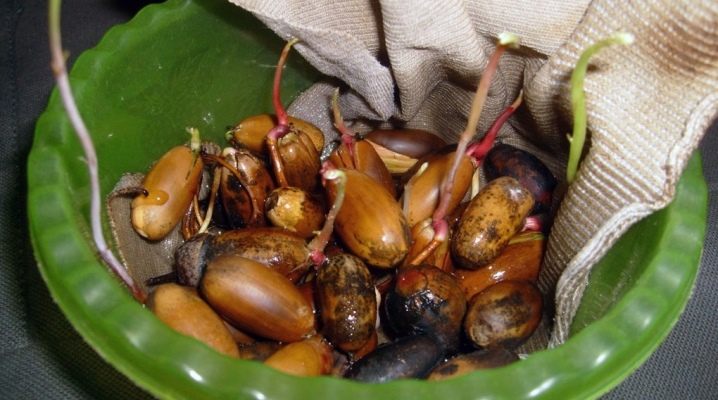
Just walking through forest parks, nature reserves or any historical places, you often come across such a well-known tree from childhood, like an oak tree. Its size (can reach about 30 m in height) and longevity (some species grow for about 800 years) are striking. Some oaks were planted by man on purpose, while others sprouted independently from an acorn. There would be many more oak groves if the acorns of all oak trees could sprout. In addition, wild boars, which feed on fallen acorns, can also prevent this.
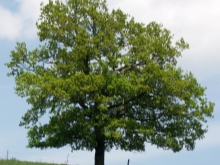
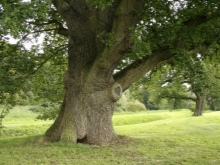
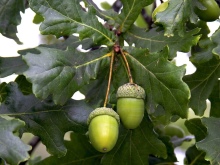
Suitable varieties of acorn
It is possible to grow an oak at home, but it is not entirely easy to do this: it is necessary to take into account some peculiarities.
Not all tree varieties are suitable for reproduction through acorns. Fruits for germination should not be collected on the ground, since, most likely, they are hollow there or damaged by pests. For rooting, large acorns are taken from strong large branches, the shell of which has a light brown, sometimes even greenish tint. You can choose the fruits mentioned above in early autumn, before all the acorns have fallen off.
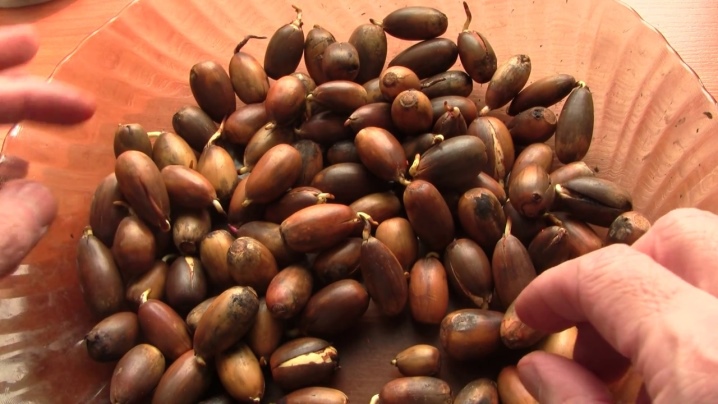
Most often, the acorns of the pedunculate oak, which is widespread in Russia, are rooted. This is an unpretentious plant, reaching a height of 50 m, which is capable of self-sowing propagation, forming oak groves. Breeders have bred many decorative varieties of this particular oak ("Compact", "Variegata" and others).
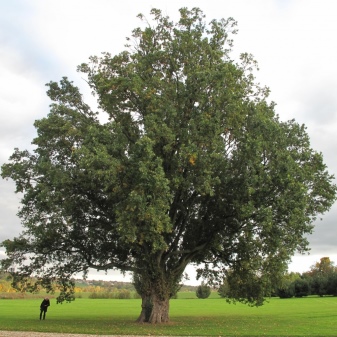
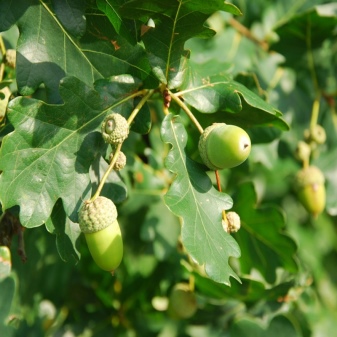
In addition, often on the territory of our country you can find such an unpretentious type of oak, like stone oak. It is a Mediterranean evergreen tree from which several decorative forms have also been derived.


Depending on the climatic conditions of the region, certain varieties are suitable for germination of acorns.
A North American oak called white, the leaves of which can change color from bright red to light green. When planning the planting of this variety, it is necessary to take into account the fact that it is not a frost-resistant variety.
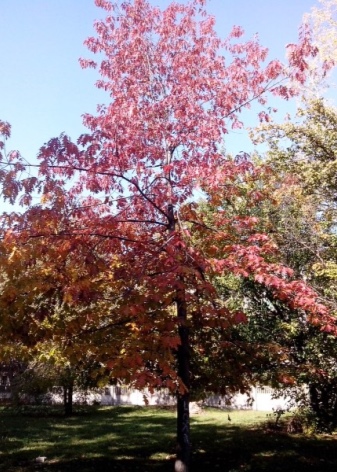
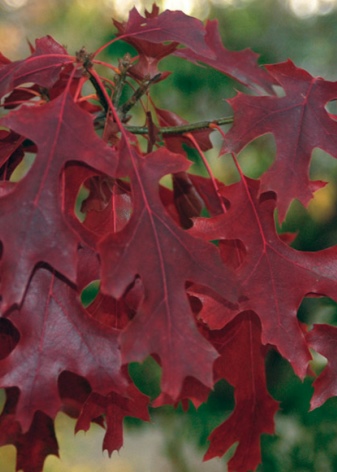
Swamp oak is also considered vulnerable to frost, under favorable conditions, it grows rapidly and forms a crown of large and pointed leaves.

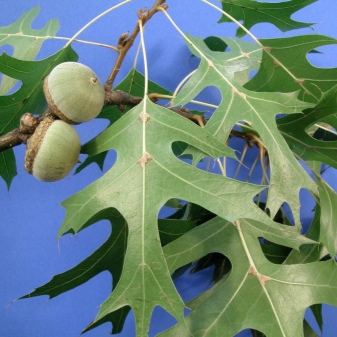
You can root the acorn of the frost-hardy willow oak, which is distinguished by lanceolate leaves reaching 12 cm in length.
The acorn of a frost-resistant red variety is easily rooted, famous for its foliage of different colors (it can be red or yellow), depending on the variety.
If we talk about exclusive varieties, then you should pay attention to rock and chestnut oaks. These are the varieties that are listed in the Red Book.

The acorns of rock oak in wild forests are not allowed to germinate wild boars, which are attracted by the impressive size of acorns (in length from 1.5 to 2.5 cm). It is a tall plant reaching 30 m in height. The lush crown of this variety is due to the size of the leaves: the length is 8-12 cm, and the width varies from 3.5 to 7 cm. Over time, the beauty of the rock oak does not diminish: even after 5 centuries, it will still remain lush.
Chestnut oak is listed in the Red Book, because to some extent it is a whimsical plant that germinates only on moist soils. Its large leaves are similar to chestnut, hence the name.
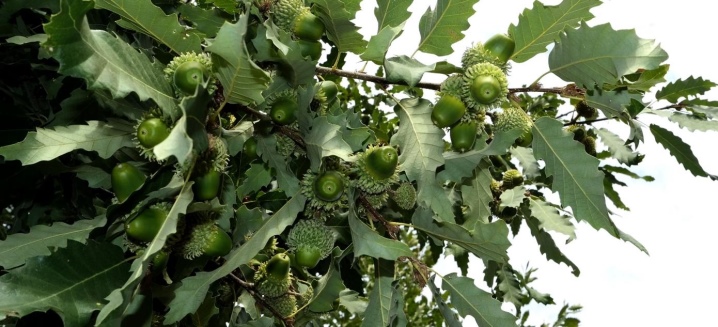
The choice of a variety largely depends on the climate where the tree will grow.So that the work is not in vain, it is recommended to approach this nuance consciously.
If the choice is made, then together with the large fruits of the oak, it is necessary to take the leaves from this tree and the ground.
Seed test
Once the material is correctly selected, it is also necessary that it pass the so-called test, which determines whether a sprout will germinate in the stomach.
For this you need to collect water in a bucket and place the selected acorns there for three minutes. Fruits that have surfaced, according to experts, will not be able to germinate, they can be safely thrown away. Acorns at the bottom are suitable for planting.

It is no coincidence that the test is also called the "water test", so a 10-liter bucket is filled completely, which creates the necessary pressure for testing. It is not recommended to use a jar, basin, etc. instead of a bucket, as well as an incomplete bucket of water, since the effect will not be the same.
After the planting material passes the test, it still needs to be prepared in a certain way.
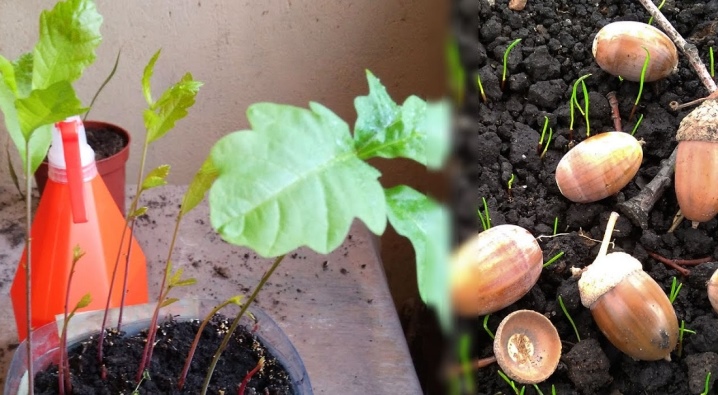
Preparation
The preparation technology is simple, the procedure can be performed simply and quickly at home. In the language of breeders, it is called stratification. Its essence is to prepare the acorn for cultivation by creating for it the conditions of winter soil, in which the tree itself was located.
Correct stratification should be performed in a certain sequence:
- find a container with a lid where there are holes for air circulation;
- put there the earth and foliage brought from the grove along with the acorn;
- we place an acorn in a container with earth;
- tightly closing the lid, put the container in a cool place with a constant temperature of + 2 ... 3 degrees Celsius (it can be a refrigerator or a cellar).
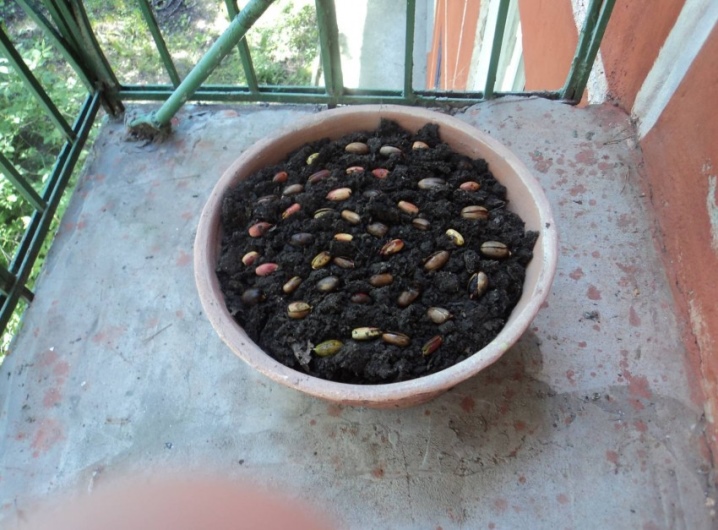
Before germinating an acorn, it should be in a cool place for about 120 days (by spring), where a seed will eventually appear.
After such preparation, the acorn germinates better, and the seedling obtained from it will grow faster. And besides, the tree itself from the point of view of care will be easier to grow.
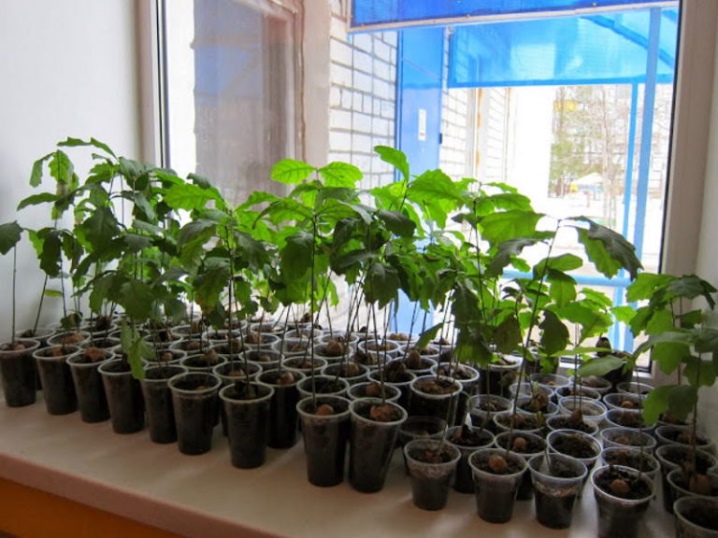
Germination
With the onset of spring, the resulting seed for further germination is placed in a place where there will be constant moisture (for example, a tied bag with wet gauze placed in it).
The appearance of roots depends on the variety and type of tree. The indicator can vary from 30 or more days. Young roots are quite delicate, so they need to be handled with extreme care.
Depending on the weather conditions and the type of tree, you can try to find acorn seeds with hatched roots directly under the oak tree in early spring after the snow melts. Since these acorns have already passed the winter "treatment", they can be immediately placed in a humid environment (bag).
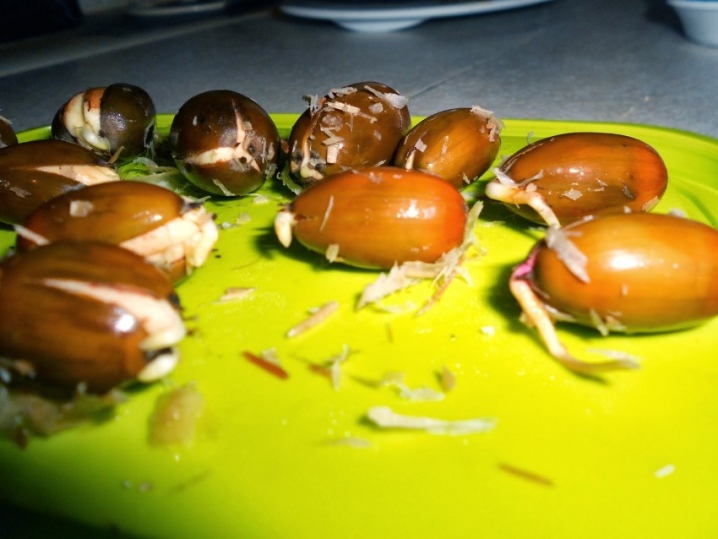
Soil selection
For the seedling to germinate, the soil must be as fertile as possible. It is desirable that this is the land where the tree itself grows. Alternatively, you can use the connection of leaf soil with rippers (sphagnum, vermiculite).
Such soil is filled with a small container with holes made (plastic cups), on the bottom of which drainage is laid, for example, from pebbles. Germinated seeds are placed in the ground to a depth of 3-5 cm.
The final touch will be to create a greenhouse effect. To do this, you can cover the cups with food stretch wrap.

Transplanting a tree
The fact that the seedling is ready for transplantation will be indicated by the roots actively appearing from the pot (small holes should be made at its bottom). In the root system of the oak there is a main root (it must not be allowed to take on a curved shape), but there are also secondary roots. It is not difficult to recognize them, since the main root runs in the center and is thicker than the rest. It is desirable that the pot is transparent, so it will be easier to monitor the root system. As a rule, secondary roots protrude from the bottom of the pot, which must be cut off until the main root begins to deform slightly. If this happens, then the seedlings are ready for further transplantation. Some craftsmen try to multiply the number of seedlings with cut roots, but this is not an easy and time-consuming job that requires certain knowledge.
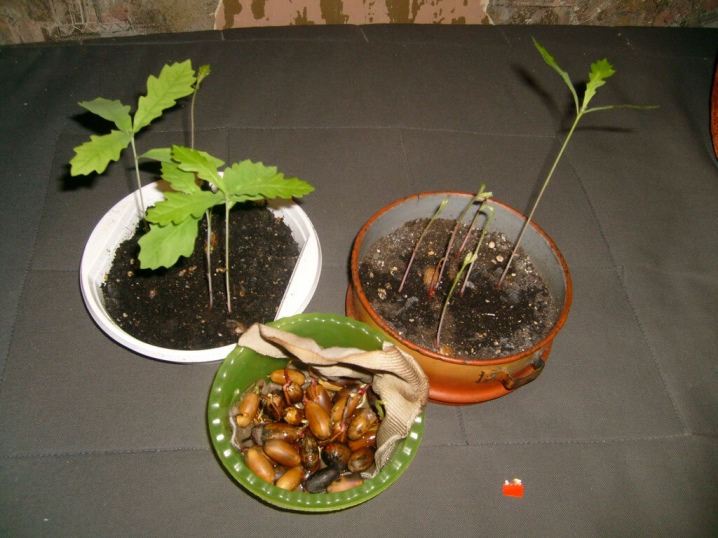
Seedling readiness
As noted above, the readiness of seedlings is manifested mainly in the root system of the oak. And this is no coincidence, since the condition of the tree as a whole and the appearance of its crown depend on the condition of the root.
In addition, there are several more indicators of the readiness of the seedling for transplantation:
- young growth has reached a height of 15 cm or more;
- leaves begin to appear on the seedling.
The formation of the central root is evidenced by its color - rich white without any shades and specks. The presence of spots indicates a plant disease. Most often it is powdery mildew, which is treated with copper sulfate.
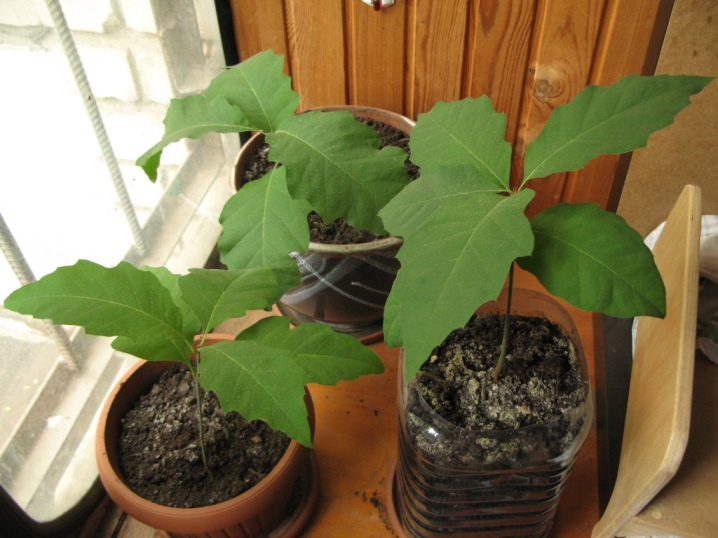
Seat selection
Oak belongs to unpretentious trees that can grow in almost any area. But a particularly favorable environment for this tree is dry soil or soil of moderate moisture. For the rapid formation of the root system, the soil must be nutritious, with at least an average supply of humus (from 3 to 4%). Adequate light is good for oak, just like any other plant. The conditions presented above allow even the weakest seedling to quickly get stronger and, having gained strength, spread a lush crown.

Having decided to plant an oak seedling on the site, in addition to the above planting requirements, it is necessary to take into account the fact that there should be no other trees nearby. This requirement is due to the rapidly developing and powerful root system of oak, which requires a lot of free space. The fact is significant, since the appearance of the crown depends on the root system.
Planting process
Spring is considered the most favorable time to plant shoots, since it allows the root system to grow stronger with the onset of heat. If a seedling grown from seeds is more than 2 years old, then before planting it in open ground, it is necessary to shorten the root to 15 cm in the center of the acorn. To prevent root damage, the hole must be sized to match the width of the root system.
Before planting a seedling in a hole on soil with excessive moisture, it is advisable to lay a drainage system to prevent root rot.
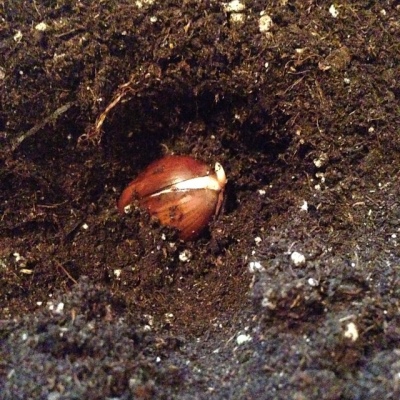
Care
Oak is a fairly hardy tree, so only a seedling that has not had time to get stronger needs minimal care. In this case, it is worth adhering to some recommendations.
- Regular but infrequent watering to keep the soil slightly moist. About a month before the autumn leaf fall, watering should be stopped so that the root system can dry out before the onset of frost.
- It is necessary to regularly remove weeds that appear on the hole or next to it, as they negatively affect the root (prevent active formation, draw moisture from the ground).
- At least 1-2 times during the spring-summer season, it is necessary to carry out a comprehensive fertilizing of the soil. Any complex suitable for a given plant can be used as a fertilizer.
- Closer to winter, it is necessary to lay mulch on the hole around the oak. To do this, you can use herbal crust, sawdust or any fallen leaves.
- After 3-4 years, the care mentioned above will not be required. Weeding will only be aesthetic.
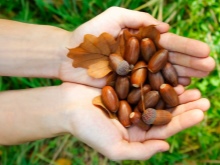
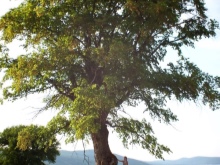
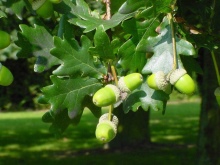
If we talk about pests or any diseases, then the tree is vulnerable to the effects of powdery mildew, rot (especially in the absence of drainage on wet soils). An adult plant most often undergoes the appearance of gall midges on the leaves - small yellow balls, similar to cones. The reason for their formation is considered to be wasp larvae laying on a leaf. To prevent their appearance, you need to treat the plant with agents (various solutions for spraying) against wasps.
For more information on how to grow an oak from an acorn, see the next video.



































































The comment was sent successfully.